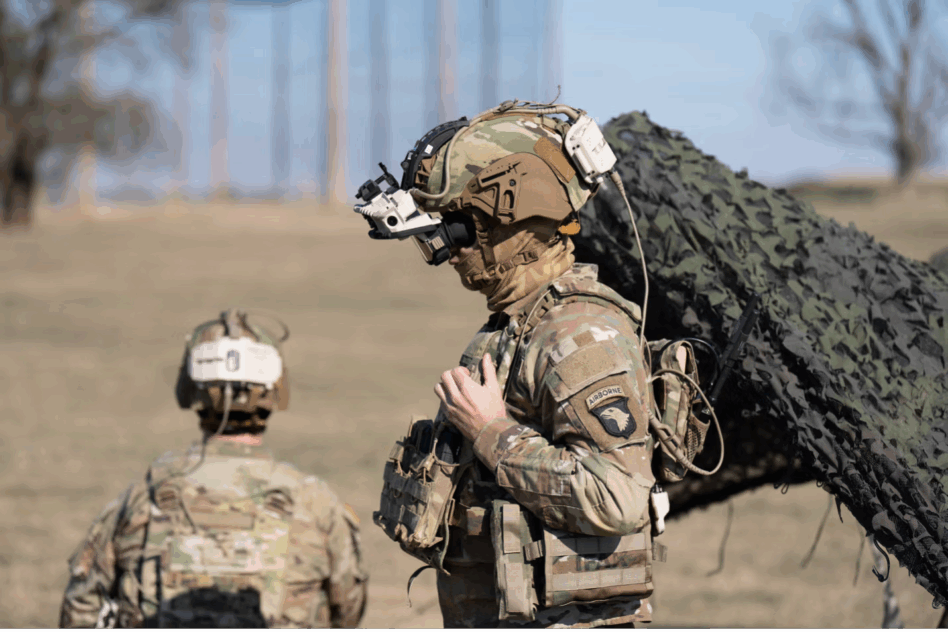Looks like Anduril is doubling down on its mixed reality roots. Yesterday, the defense tech giant confirmed that it’s scored a $159M US Army contract to prototype a night vision and mixed reality system as part of the Soldier Borne Mission Command (SBMC) program, the successor to IVAS.
The company said in a statement that its goal is to “equip every soldier with superhuman perception and decision-making capabilities—fusing the best of night vision, augmented reality, and AI into a single system.”
Anduril says it will lead a team of high-tech partners, including Meta, OSI, Qualcomm Technologies, and Gentex Corporation, to develop a helmet-mounted setup that blends advanced night vision with augmented reality overlays, providing soldiers with real-time battlefield intelligence.
“Anduril’s solution reimagines the battlefield interface, giving soldiers superhero-like abilities,” the company said in a statement.
Maxar also announced yesterday that they’ve inked a deal with Anduril to provide the geospatial intelligence that will power the system.
Team Anduril’s prototype will be pitted against goggles made by a new, Palantir-backed firm called Rivet, which said they scored a $195M contract to develop their own SBMC prototype. Once again, the Army is giving us all an occasion to break out the popcorn.
Rocky road: SBMC and IVAS have had a bit of a tough time of it, to say the least. The Army contract for a mixed reality headset for soldiers was originally awarded to Microsoft back in 2021—a cool 10-year production agreement worth up to $22B.
Microsoft, well, didn’t kill it. Soldiers reported serious performance issues with their HoloLens headsets—users with the headsets on did significantly worse on ranges, and some even reported physical effects, like nausea and dizziness. Luckily, everyone’s favorite defense tech company stepped in to save the day.
- Anduril (conveniently founded by Oculus VR creator Palmer Luckey) announced that it would take over the beleaguered program from Microsoft back in February of this year.
- In April, the $22B contract was officially transferred over, and the takeover was green-lit by the Army.
- In May, Anduril announced that it would team up with Meta to build a headset for the SBMC competition.
- Also in May, the Army officially issued a solicitation for prototypes for the new headsets—now part of the SBMC program.
Build-up: Now, stick with us, because things are about to get a little confusing. You might be sitting there thinking—wait, how is Anduril competing on a program it’s already taken over?
Well, this new competition is for the physical headset—the broader IVAS program has been turned into the Soldier Borne Mission Command-Architecture (SBMC-A) program, which is the “software backbone for the Army’s new mission systems.” SBMC-A is built on Anduril’s Lattice C2 system by a top-tier team including Palantir, Maxar, L3Harris, Persistent Systems, Sierra Nevada Company, and others.
Whichever headset (or headsets) move forward will be plugged into this broader mixed-reality ecosystem. In its statement, Anduril did not specify a timeline for SBMC prototype delivery, but Rivet told Breaking Defense that they will build their version within 18 months.

